| Srl | Item |
| 1 |
ID:
160248
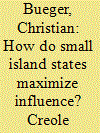

|
|
|
|
|
| Summary/Abstract |
A lack of capabilities is most often taken to imply a lack of influence. The foreign policy of the Seychelles provides a surprising case of successful small state diplomacy that counters this claim. With a population of less than 100,000 and a diplomatic service of 100 staff, Seychelles is recognized as a broker in international organizations and as an agenda setter in ocean governance. This article explores this success in four steps. First, we unpack why the current diplomatic success of Seychelles is a surprise. Second, drawing on literature on small state diplomacy, we identify three sources of small state influence: capability and location, political culture and institutional design, and political strategy. Third, we analyze recent Seychellois diplomacy in light of the four factors as well as the limitations of Creole small state diplomacy. We conclude by discussing what other small states may learn from the Seychelles.
|
|
|
|
|
|
|
|
|
|
|
|
|
|
|
|
| 2 |
ID:
160247
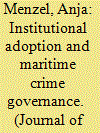

|
|
|
|
|
| Summary/Abstract |
The Djibouti Code of Conduct plays a central role in addressing maritime piracy and armed robbery in the Western Indian Ocean and the Gulf of Aden. Assuming rational actors base diplomatic decisions on cost–benefit calculations, this paper argues that decision-makers consider existing policy models on interstate cooperation when drafting international agreements. Comparing state-to-state agreements on the combat of maritime crimes which are located in different world regions, and studying the causal mechanisms behind policy adoption, the benefits of adopting institutional features from existing institutions, and exchanging best practices are underlined. The results suggest that the Djibouti Code of Conduct is subject to and subject of an inter-regional learning process. Facilitated by the International Maritime Organization, the code drew heavily on counter-piracy experiences from Southeast Asia, and in turn influenced cooperation on illicit maritime activities in West and Central Africa. Interviews with decision-makers add to the understanding of the code’s drafting and highlight the potential of inter-regional synergies for diplomacy in the Indian Ocean region beyond maritime crime governance.
|
|
|
|
|
|
|
|
|
|
|
|
|
|
|
|
| 3 |
ID:
160254
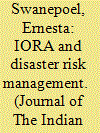

|
|
|
| 4 |
ID:
160251
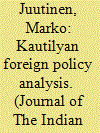

|
|
|
|
|
| Summary/Abstract |
This article evaluates and interprets Kautilya’s Arthasastra – an ancient Sanskrit treatise on statecraft and foreign policy – as a framework for analyzing the conflicting dynamics in a pluralistic order. Second, it operationalizes Arthasastra as an analysis of Sino-Indian dynamics in South Asia and the Indian Ocean region. In examining Kautilya’s political theory, the article answers the perceived need for non-Western international relations theory. A theoretical contribution of the analysis of Kautilya includes an understanding that even inferior powers can become leaders in international affairs and that the precondition of sustainable leadership is the welfare of all subjects of government. Thus, Kautilya appears as an untapped source for conceptualizing international relations in a post-hegemonic order and provides a normative background for rethinking how to manage conflicts. On an empirical level, the article discusses the problem of China’s membership in the South Asian Association for Regional Cooperation (SAARC), as well as the economic, military and political implications of the Belt and Road Initiative for India and the Indian Ocean Region. The article proposes SAARC + 1, Indian active engagement with the Bangladesh–China–India–Myanmar Economic Corridor and the initiation of investment, connectivity and infrastructure projects through the Quad.
|
|
|
|
|
|
|
|
|
|
|
|
|
|
|
|
| 5 |
ID:
160246
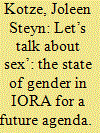

|
|
|
|
|
| Summary/Abstract |
Gender equality is high on the global agenda. With the adoption of the sustainable development goals, the world reaffirmed its commitment to advance gender equality and the empowerment of all women and children. In this context, the Indian Ocean Rim Association (IORA) committed itself to gender equality through advancing women’s economic empowerment [IORA (2016). Declaration on gender equality and women’s economic empowerment. Retrieved from
|
|
|
|
|
|
|
|
|
|
|
|
|
|
|
|
| 6 |
ID:
160255
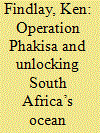

|
|
|
| 7 |
ID:
160253
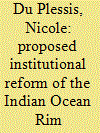

|
|
|
| 8 |
ID:
160249
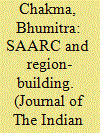

|
|
|
|
|
| Summary/Abstract |
Region’ is a contested concept. Although scholars have extensively debated the issue, there is no consensus on the definition of region. While some scholars emphasize geographic proximity as a key factor, others put importance to cognitive and ideational factors, yet some others seek to combine the two perspectives to define region. Against such a background, this paper explains the complexities of defining South Asia as a region. It explores the historical evolution of the identification of the region and analyses how region building in recent decades, instead of consolidating its regionness, has produced a multiplicity of discourses, narratives and meanings about South Asia as a region. This is particularly evident if South Asia is examined in terms of ‘economic,’ ‘security’ and ‘cultural’ region. Importantly, these discourses, narratives and meanings are not necessarily symmetrical and compatible with each other although they co-exist in an uneasy manner at both regional and national levels. And, they are contingent and subject to change over time.
|
|
|
|
|
|
|
|
|
|
|
|
|
|
|
|
| 9 |
ID:
160252
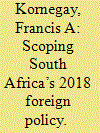

|
|
|
| 10 |
ID:
160256
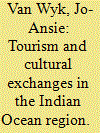

|
|
|